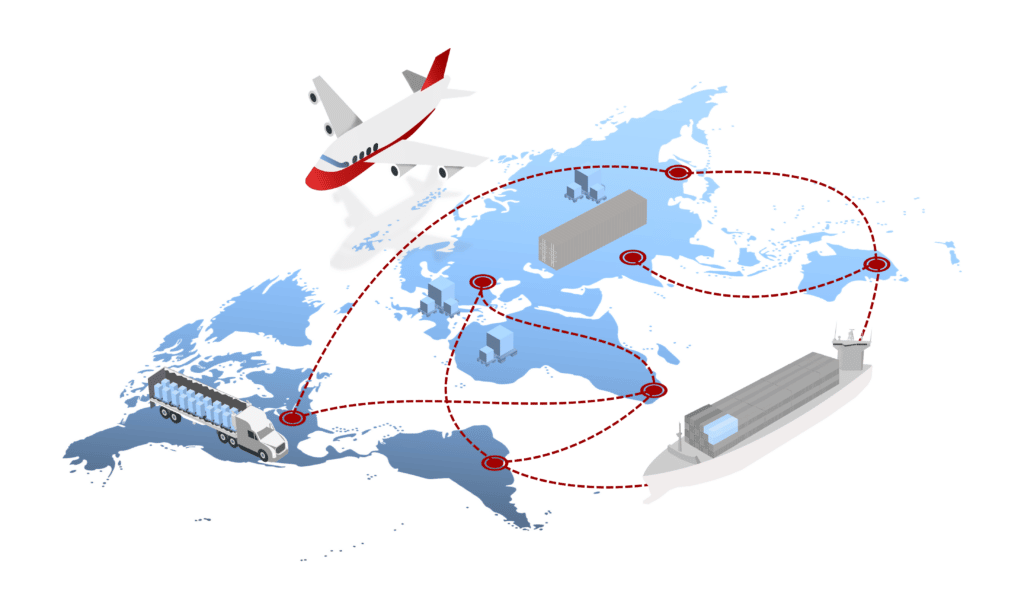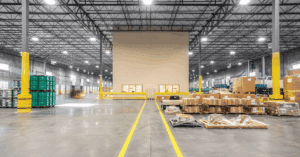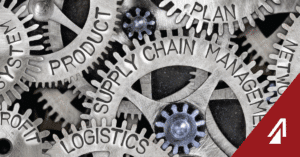Coronavirus
Despite the lockdowns in Shanghai, China, trade is holding steady at the Ports of Los Angeles and Long Beach according to Port of LA Executive Director, Gene Seroka. “I don’t see a bust [in cargo volumes] coming anytime soon,” Seroka said. “More likely, as I’ve shared before, we may see a lull in volume with a fairly quick bounce back when the lockdowns end.” May volumes have been consistent from Asia and elsewhere to LA and LB with roughly 130 ships queued to deliver in LA/LB. The reason these volumes have maintained consistent is that many of the China’s exports have come through Shanghai’s surrounding ports like Nantong, Zhoushan, or Ningbo and have been able to keep up transpacific freight flows.
GDP
Recession forecasts loom in May as the US economy has not been able to recover from the 1.5% decline suffered in Q1. Many economists see the imbalance in imports/exports and reduction in government spending and private investments as holding steady, driving down the US GDP growth. A recession, which is two or more quarters of decline in a row, seems imminent but cannot be confirmed until Q3 when the Q2 numbers are established.
Employment
May employment rates are on the rise, growing to a rate of 60.10%. Unemployment rates remained at 3.6% from the previous two months and has performed below market expectations (3.5%). Labor force participation also increased to 62.3%.
Inflation
Inflation rose to a 40 year high again in May. The rate increased above expectations to 8.6% and is the highest since December of 1981. Energy, food, shelter, and transportation remain as the highest growth sectors. Fuel oil made an all-time record increase of 106% and food made a 40 year record increase of 10.1%.
Manufacturing
May has seen a short decline in the manufacturing PMI. This month, the index fell to 57 points from 59.2 in April. This indicates a slow in production and new sales as well as higher input costs. Client demand has also slowed in light of higher inflation costs, material shortages, and delivery delays.
Interest Rates
The minutes from the Federal Reserve Board meeting in May indicated that officials were set to raise the interest rate 50 basis points. They also indicated that their policy may have to move past “neutral” and into “restrictive” territory. Their main concern is to bring down inflation while balancing financial stability risks.
Capacity
This month saw a spike in load posts on DAT trendlines, but unfortunately saw a decline in available trucks. May shipment demand rose 14% from April, but truck supply fell 2.3%. This month reversed the load to truck ratio that had been tightening consistently since the start of 2022 and signals upcoming price increases for the summer.
Air traffic is showing greater capacity in regions like southeast Asia, but many of these governments are restricting travel for passengers due to COVID-19 concerns. Associations like IATA have been petitioning governments in the region to ease these restrictions and allow vaccinated passengers to travel freely.
Experts are predicting increased traffic in US ports as summer approaches and US imports increase for peak season.
Regulations
Federal regulators are investigating the possibility of creating speed limits for semi-trucks via electronic engine devices. The rules are currently in discussion with the FMCSA issuing a request for comment from the logistics industry. The proposed regulation would be implemented in 2023.
So far, the industry is split between the desire for increased safety and operational effectiveness/productivity concerns.
“The number of commercial motor vehicle (CMV) crashes in which speed is listed as a contributing factor is unacceptable,” FMCSA said. “A carrier-based approach could provide the opportunity to compel fleets that are not currently using speed limiters to slow down their CMVs within a relatively short period.”
One of the preeminent voices in opposition to the proposal is the Owner-Operator Independent Driver Association (OOIDA) that vehemently opposes any regulation to speed limiting. Many of drivers have voiced concerns that limiting speed is effectively a pay cut because they are paid by the mile and not by the hour.
Rates
So far, prices have held steady in spite of the increased demand. The average spot bid rate for a truckload is $2.71 per mile.
Technology
With geopolitical struggles raging in Europe and around the globe, many technology and automotive manufacturers are turning to alternative solutions for rare metals and materials like lithium. These manufacturers are partnering with the US government to increase domestic supply by recycling lithium batteries and other rare mineral devices rather than rely on foreign manufacturers. Early in March, the US department of Energy released a list of 13 new battery manufacturing facilities that were to be built across the US within the next 5 years. Currently, the process of recycling lithium batteries is new in the US, so the focus is on recovering lithium ions from passenger vehicle batteries.
Fuel Impact
Diesel prices continue to climb from an increase in scarcity and in taxes levied on each gallon. The average price per gallon is $5.72/gallon and is a 3% rise from April.
Driver Concerns
One of the largest driver concerns for May is the lack of truck parts. Since the beginning of the pandemic, part production has been significantly reduced due to lack of supply and labor. Those shortages have rippled into today with fewer parts available than ever. This affects both new vehicle production and used vehicle maintenance. Many trucking companies have had to get creative with sourcing for parts and have turned to recycling parts from older, broken-down trucks. “Fleets are scouring any and every marketplace for parts, sourcing them from Craigslist, eBay, salvage yards and other fleets,” said Robert Braswell, executive director of the ATA’s Technology and Maintenance Council. “We’ve never seen it at such frenetic levels as we are today.”



